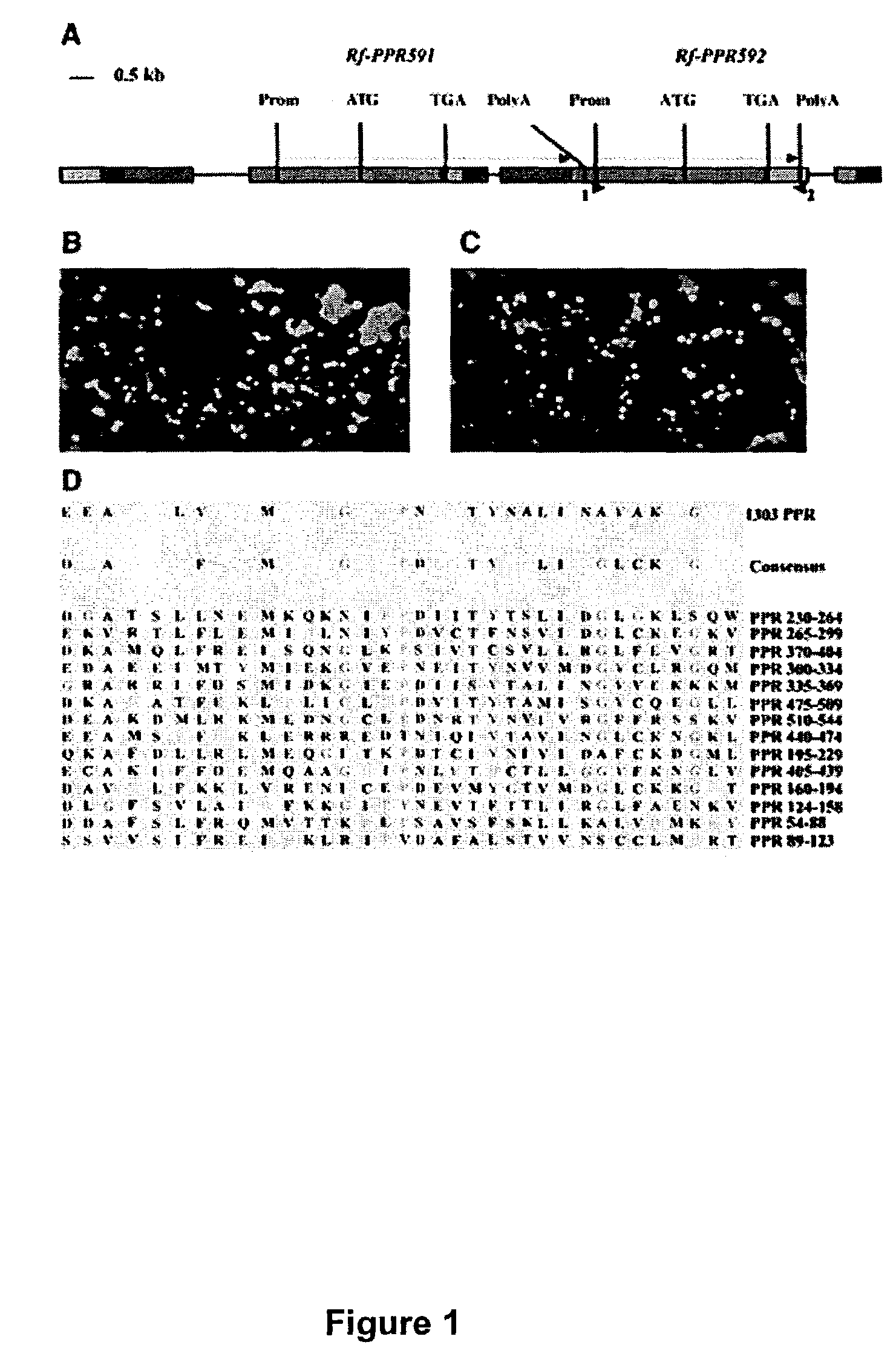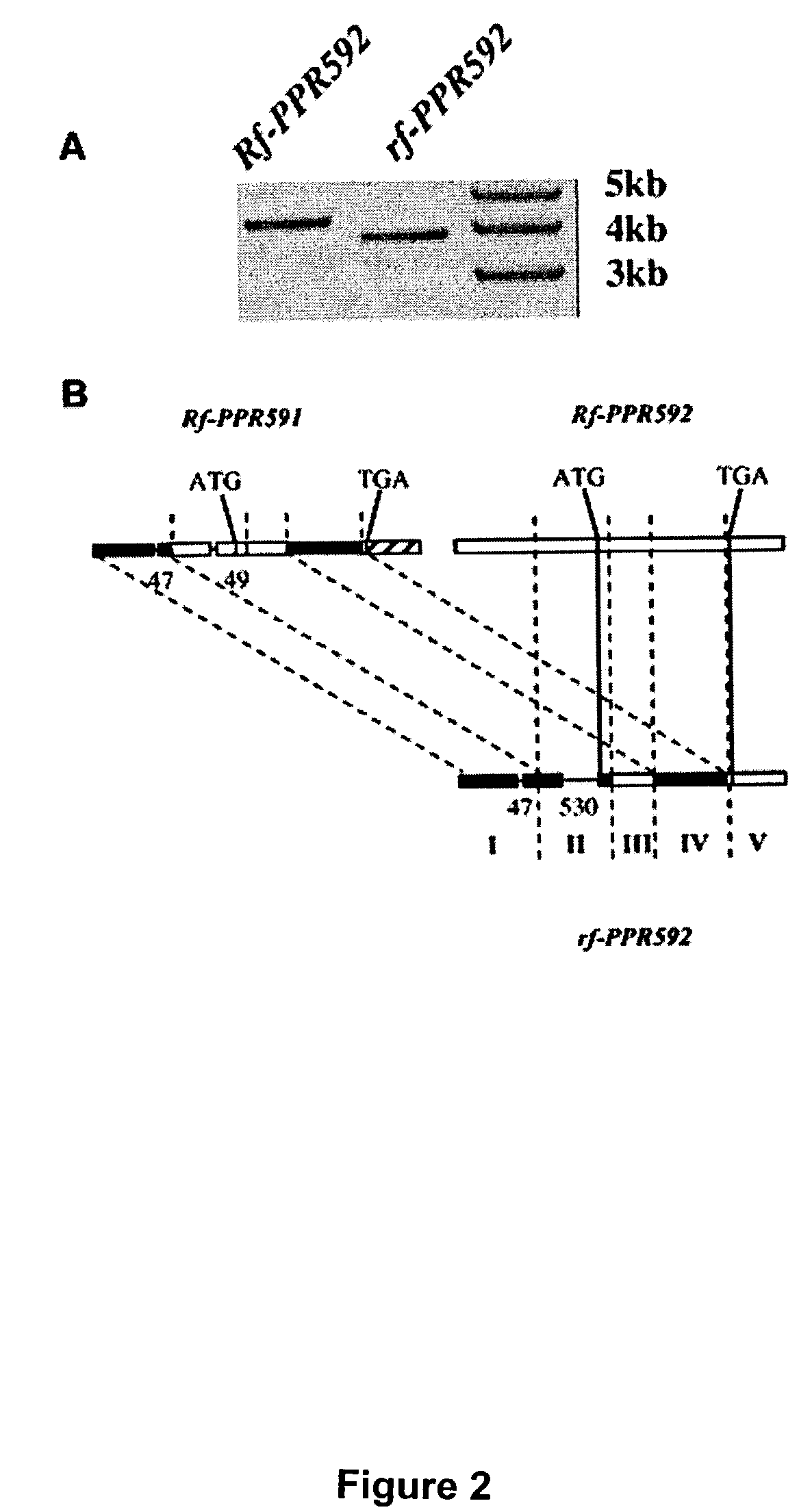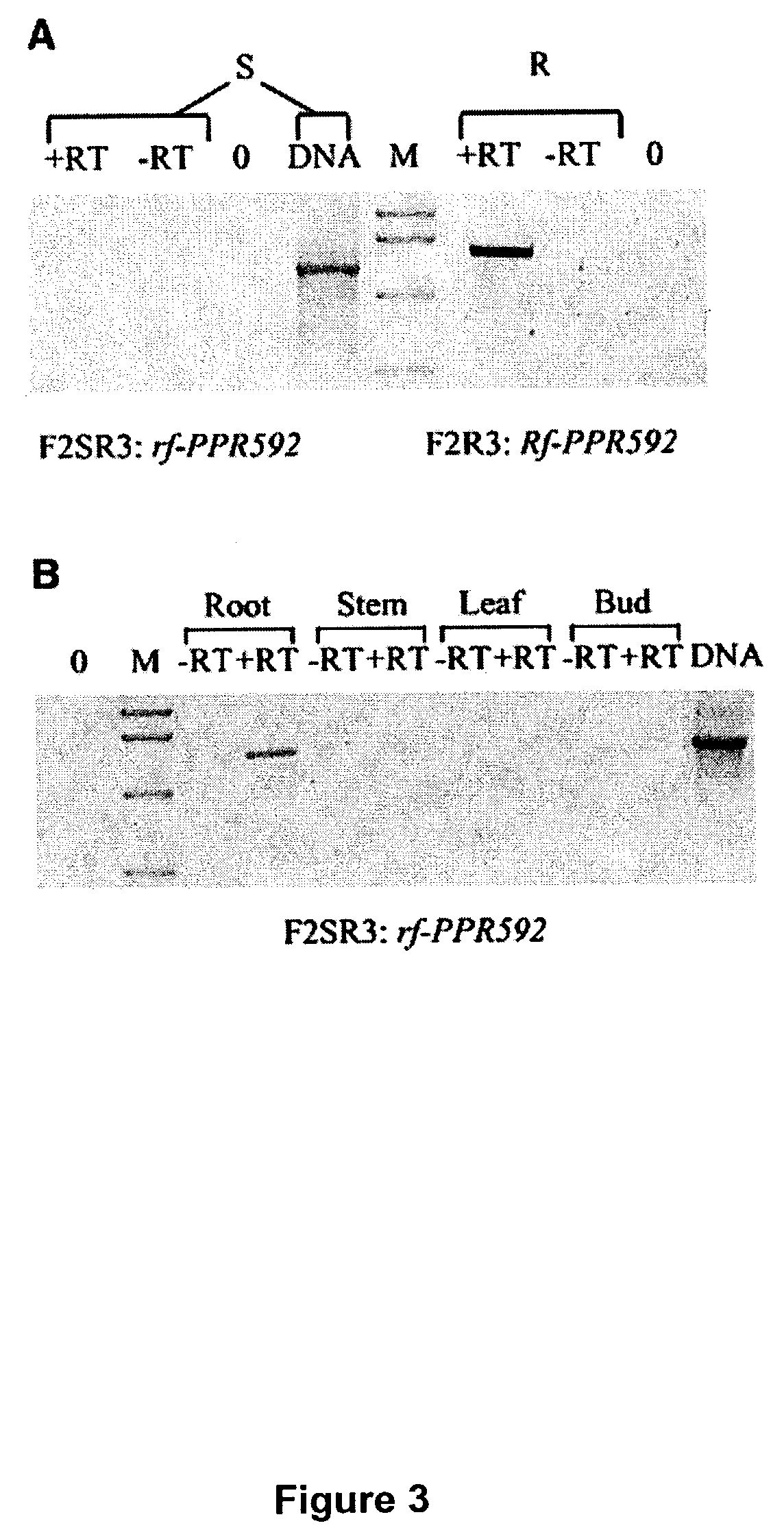Restoration of fertility to cytoplasmic male sterile petunia
- Summary
- Abstract
- Description
- Claims
- Application Information
AI Technical Summary
Benefits of technology
Problems solved by technology
Method used
Image
Examples
example 1
Identification of Two PPR-Containing ORFs as Potential Candidates for the Rf Gene
[0155]Previously, the isolation of a 37.5-kb BIBAC clone, SB5, that cosegregates with the Rf gene has been reported (Bentolila et al., “Identification of a BIBAC Clone That Co-Segregates With the Petunia Restorer of Fertility (Rf) Gene,”Mol. Genet. Genomics, 266:223–230 (2001), which is hereby incorporated by reference in its entirety). SB5 is part of a contig that was constructed by screening a Petunia BIBAC library with a marker, EACA / MCTC, tightly linked to Rf. No recombination was identified between EACA / MCTC and Rf after examining 1,078 meiotic events. The genetic delimitation of the Rf locus was achieved only partially on the BIBAC contig. One extremity of the contig was separated from Rf by the occurrence of four recombination events, whereas no crossing-over was found between Rf and the other extremity (Bentolila et al., “Identification of a BIBAC Clone That Co-Segregates With the Petunia Restor...
example 2
A Deletion in the Promoter of rf-PPR592 Prevents Its Expression in CMS Floral Buds
[0168]If one of the candidate ORFs, Rf-PPR591 or Rf-PPR592, is the Rf gene, some sequence polymorphism between the allele of these ORFs found in a restorer line (Rf / Rf) and the allele found in a CMS plant (rf / rf) might be expected. Presumably some difference in the sequences of the dominant Rf allele vs. the recessive nonrestoring allele rf must reflect their opposite restoring ability. The sequence of rf-PPR592 was obtained by amplifying genomic DNA of aPetunia hybrida rf / rf plant, where rf was inherited from a P. hybrida line called 2423, with the Pfu Turbo Hotstart DNA polymerase (Stratagene, La Jolla, Calif.) and PCR primers flanking Rf-PPR591 (5′-TGCACAGTGTTATATTTACATACCC-3′; SEQ ID NO: 46) and Rf-PPR592 (5′-TTTATGATACATGGATTTCAACGAC-3′; SEQ ID NO: 47). A PCR product was obtained only with a primer specific to the 3′ flanking region of Rf-PPR592, not with a primer specific to the 3′ flanking regio...
example 3
Rf-PPR592 Is Able to Restore Fertility to CMS Plants
[0176]A sequence encoding the N-terminal 44 aa of Rf-PPR592 was inserted 5′ to the green fluorescent protein (GFP) sequence in the pOL vector (Peeters et al., “Duplication and Quadruplication of Arabidopsis thaliana Cysteinyl- and Asparaginyl-tRNA Synthetase Genes of Organellar Origin,”J. Mol. Evol., 50:413–423 (2000), which is hereby incorporated by reference in its entirety) to use in transient assay of protein localization. As a control, a vector carrying GFP fused with a known mitochondrial coxIV transit peptide (Akashi et al., “Potential Dual Targeting of an Arabidopsis Archaebacterial-Like Histidyl-Trna Synthetase to Mitochondria and Chloroplasts,”FEBS Lett., 431:39–44 (1998), which is hereby incorporated by reference in its entirety) was also used in the transient assays. DNAs of GFP constructs were bombarded into onion epidermal cells as described in Scott et al., “Model System For Plant Cell Biology: GFP Imaging In Living ...
PUM
| Property | Measurement | Unit |
|---|---|---|
| Morphology | aaaaa | aaaaa |
Abstract
Description
Claims
Application Information
 Login to View More
Login to View More - R&D
- Intellectual Property
- Life Sciences
- Materials
- Tech Scout
- Unparalleled Data Quality
- Higher Quality Content
- 60% Fewer Hallucinations
Browse by: Latest US Patents, China's latest patents, Technical Efficacy Thesaurus, Application Domain, Technology Topic, Popular Technical Reports.
© 2025 PatSnap. All rights reserved.Legal|Privacy policy|Modern Slavery Act Transparency Statement|Sitemap|About US| Contact US: help@patsnap.com



